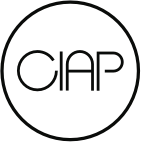Kunstverein
Publications
- The black gold cookbook,
— Barbara Prada - Antonio Vega Macoela's Incendio in Art Viewer,
— Art Viewer - Incendio by Antonio Vega Macotela,
— Alicja Melzacka - Where widowed objects meet orphaned ideas featured in BLOK Magazine,
— BLOK Magazine - DEMEURE ET CIVILISATION ,
— Jean-Baptiste Carobolante - l'art même - Martin Belou featered in The Word Magazine,
— Emi Vergels - Martin Belou: Objects, Love and Patterns,
— Dagmar Dirkx - Laurie Charles: Le Chalet,
— Dagmar Dirkx - Martin Belou at CIAP featured on Art Viewer,
— Art Viewer - Martin Belou featured on KubaParis,
— KubaParis - Laurie Charles featured in Subbacultcha,
— Elice Spillebeen
Martin Belou: Objects, Love and Patterns
author: Dagmar Dirkx
With ceaseless fascination for the things surrounding us, artist Martin Belou (°1986, FR) dwells among an extensive range of objects - seeds, coral, mushrooms, fragments of copper, plaster, and metal. Belou’s practice is a receptive one. He allows himself to be ‘affected’ by these objects, their forms and their physical qualities. The artist speaks of an encounter, a random discovery of things which meet the unwritten criteria of his collection – a growing agglomeration of things that stimulate and surface in his practice.
What binds the objects in the collection, however, are the sculptural consequences of time and space that change and shape their materials. Plaster is a porous substance that allows smoke to pass easily through it; bronze falls prey to corrosion; and eerie mushroom formations arise by way of a long process of fermentation and decay (Club Belou FW 17, 2017; ex voto, 2016). In spite of their ephemeral nature, transitory processes such as smoke, corrosion, or vapour leave permanent traces. Belou integrates these natural procedures as strategies within his palette – patiently build- ing up his atmospheres.
Belou’s exhibition at CIAP, Objects, Love and Patterns, is designed as a laboratory, with the artist dishing up an assemblage of marble objects, jars, rotting fruits, a gas cooker, and a vapour machine - all in various states of change. The exhibition is presented on a large metal table which cleaves through the various rooms of CIAP. Belou’s goal is not only to manipulate these objects and phenomena within the space. He allows them to play their own game as well – letting nature improvise. Drops of steam leave a residue on the metal surface, and the smudge stick of white sage produces a strong odour which saturates the rooms. Oscillating between sculpture and performative game, between control and laisser-faire, Belou distils a synaesthetic environment.
There is, however, an air of homeliness within this laboratory in the former Limburg council building. The different rooms summon up vague reminiscences of a kitchen, a living room, a bathroom, but do not speak too strongly to any single idea of how a home takes shape. Rather, Belou is guiding the visitor to an individual, mental haven, activated by widely recognisable forms, sounds, odours, and colours.
In his research, the anthropologist Paul Vandenbroeck coins the term ‘nameless motive’ – a pattern appearing both transgeo- graphically and transhistorically, which has been named ‘gorgo’, ‘medusa’, ‘hedgehog’, or ‘maqrouth’. This motive can be seen, among many other places, in medieval ex-votos, in contemporary Libyan and Moroccan rugs, and in wall-paintings by Eastern European Neolithic cultures from 6000-5000 B.C. Even though it takes different forms, the core remains unchanged: an oval or circular form with protuberances, not unlike a womb. And yet, the anthropologist insists, it need not be an explicit reference to fertility. Rather, the pattern appeals to a deep-rooted aesthetic intuition of mankind. Vandenbroeck does not suggest a stylistic kinship through ‘genetic influencing’, but he does point in the direction of underlying, affective patterns and connections in our subconscious.
In Belou’s work, drop-like, phallic patterns recur regularly, as well as protuberances and spirals. As with the ‘nameless motive’, though these forms do not necessarily stand-in for ready-made concepts such as gender or fertility there are close connections and suggestions that underwrite their interactions in the space. The artist appeals to an ur-imagery that has slumbered forever in mankind. At CIAP, one notices snake-like and rounded patterns in the objects which Belou collects; a recurrence emphasized by the many mirrors and reflections present in the space.
Familiarity through kinship and repetition has also been an important concept for the French philosopher and sociologist Maurice Halbwachs. Halbwachs considered the identification of familiar objects as crucial to man’s mental health. Belou’s provocation is that such recognition can only be achieved if one literally probes the objects around. Themes of manipulation and touch loom up in his frequent showing of hands and fingers, feet and toes – instruments to our mediation of the world (So many Fingers, 2017).
Belou does not consider our relation to our physical environment as a purely individual one. Rather, our tastes and desires, reflected in our choice and arrangement of objects, are rooted in the ties binding us to a group. Already in the first civilisations, a house was being made ‘livable in relation to smooth social interaction on a micro-scale.’ In his project Wellness Weekend (2017), Belou investigated the significance of daily rituals for a community. At the BIN (Belgian Institute for Normalisation, in the town of Turnhout), the artist co-operated with students from the Sandberg Institute, Amsterdam to create a spa, with such attractions as a sunbed, a vegetable garden, several showers, a swimming pool, and a mud-bath. Using readily available materials, Belou and the students first developed that which is essential to survival, and subsequently raised the bar towards a place of comfort and well-being.
In Objects, Love and Patterns, Belou reunites his guests around recognisable ‘primordial forms’, objects, odours, sounds, and colours. As if seated around a table, visitors share the same rituals and habits, and most of all exchange personal experiences from their ‘mental haven’. Martin Belou calls his guests’ attention to their communal imagery. In so doing, he moves toward forging a new sense of collectivity, based on love for the object and the phenomena which surround us.
This text was produced in the context of the solo exhibition 'Objects, Love and Patterns' (04.05 - 26.08.2018) curated by Louise Osieka and supported by The Flemish Government, City of Hasselt, Fédération Wallonie-Bruxelles, the members of CIAP, Hasselt Millésime and Duvel Moortgat.

